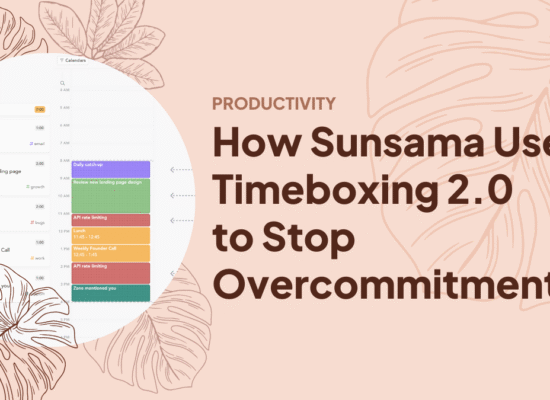Table of Contents
- Why Measuring Thought Leadership Impact Matters Now
- Redefining Thought Leadership in Content Marketing
- The Dual Framework for Measuring Thought Leadership Impact
- Building Your Measurement System
- Turning Measurement Into Optimization
- Common Measurement Pitfalls to Avoid
- The Human Element in Thought Leadership Measurement
- Building a Culture of Measurable Thought Leadership
- Starting Your Measurement Journey
- The Future of Thought Leadership Measurement
- Ready to Transform Your Thought Leadership Strategy?
We often claim thought leadership in our marketing but rarely measure its actual impact. This disconnect creates a blind spot in our content strategy. We invest in creating insightful content, sharing industry perspectives, and positioning ourselves as experts—yet struggle to quantify the return on that investment.
The challenge isn’t just academic. When we can’t measure thought leadership impact, we can’t optimize it. We can’t defend its budget. And we certainly can’t maximize its potential to transform our brand’s position in the market.
But here’s the good news: measuring thought leadership impact isn’t impossible. It just requires a more nuanced approach than tracking standard content metrics.
Why Measuring Thought Leadership Impact Matters Now
The business case for measuring thought leadership impact has never been stronger. Research by Edelman and LinkedIn reveals that 55% of decision-makers use thought leadership to vet organizations they might hire.
This isn’t just about vanity metrics. It’s about business impact.
Organizations that prioritize thought leadership gain measurable advantages. They’re 2.4 times more likely to command premium pricing and twice as likely to achieve market share leadership.
Yet despite these benefits, many of us struggle to connect our thought leadership efforts to concrete business outcomes. We track surface-level engagement but miss the deeper impact signals that truly matter.
Redefining Thought Leadership in Content Marketing
Before we can effectively approach measuring thought leadership impact, we need clarity on what it actually is.
Thought leadership isn’t just expert content. It’s content that fundamentally shifts how your audience thinks about important industry challenges and opportunities.
True thought leadership combines three essential elements:
- Original insight that goes beyond common knowledge
- Practical value that helps your audience solve real problems
- Forward-thinking perspective that anticipates future industry developments
When we focus on measuring thought leadership impact, we’re essentially measuring how effectively our content delivers on these three dimensions. Learning how to optimize content strategy around these elements becomes crucial for sustainable success.
The Dual Framework for Measuring Thought Leadership Impact
Effective measurement requires balancing two complementary approaches: quantitative metrics and qualitative indicators.
We’ve found that organizations often overemphasize one at the expense of the other. They either focus exclusively on numbers that don’t capture true influence, or rely entirely on anecdotal feedback that lacks statistical validity.
The solution is integration. Teams that understand how to boost team collaboration between analytics and creative departments often see the most comprehensive measurement results.
Quantitative Metrics Worth Tracking
Start with these foundational metrics that signal thought leadership impact:
- Content engagement depth: Average time spent with your content, scroll depth, and return visits indicate whether your ideas are resonating.
- Audience growth quality: Track not just follower counts but the professional relevance of new audience members. Are you attracting decision-makers and industry influencers?
- Citation and reference frequency: How often other content creators reference your ideas serves as a proxy for influence.
- Lead quality indicators: Measure how leads generated through thought leadership content compare to other sources in terms of conversion rates, deal size, and sales cycle length.
- Search visibility for expertise terms: Track your ranking for terms that signal thought leadership in your specific domain.
These metrics provide the quantitative foundation for your measurement framework. But numbers alone don’t tell the full story.
Qualitative Indicators That Matter
Balance your quantitative metrics with these qualitative indicators:
- Perception shifts: Survey your audience before and after exposure to your thought leadership content to measure changes in how they perceive your brand’s expertise.
- Speaking invitation quality: Track the caliber of speaking opportunities your thought leadership generates.
- Partnership opportunities: Monitor how your thought leadership influences partnership requests from other respected organizations.
- Media coverage depth: Assess not just the quantity but the quality of media mentions, focusing on whether they position you as an authoritative voice.
- Audience feedback themes: Analyze patterns in comments, messages, and direct feedback to identify how your content is influencing thinking.
When combined with quantitative metrics, these qualitative indicators provide a comprehensive view of your thought leadership impact.
Building Your Measurement System
With our framework established, let’s explore how to implement measuring thought leadership impact practically.
The key is creating a system that’s both robust and sustainable. We want measurements that provide genuine insight without requiring excessive time or resources.
Step 1: Define Your Thought Leadership Goals
Start by clarifying what you want your thought leadership to achieve. Common goals include:
- Brand positioning: Establishing your brand as an authority in a specific domain
- Market education: Shifting how your market thinks about key challenges or opportunities
- Sales enablement: Supporting your sales process with credibility-building content
- Partnership development: Attracting strategic partners through demonstrated expertise
- Talent attraction: Drawing top talent to your organization through thought leadership
Your specific goals will determine which metrics deserve priority in your measurement system.
Step 2: Establish Your Baseline
You can’t measure progress without knowing your starting point. Document your current position across all relevant metrics before launching new thought leadership initiatives.
This baseline will serve as your comparison point for measuring thought leadership impact over time.
Step 3: Select Your Measurement Tools
Choose tools that align with your specific metrics:
- Analytics platforms: Google Analytics, Adobe Analytics, or specialized content analytics tools provide engagement data.
- Social listening tools: Platforms like Brandwatch, Mention, or even free tools like Google Alerts help track citations and references.
- Survey tools: SurveyMonkey, Typeform, or Google Forms can gather perception data from your audience.
- CRM integration: Connect your thought leadership metrics to your CRM to track influence on lead quality and sales outcomes.
The goal isn’t implementing every possible tool but selecting those that provide meaningful data for your specific objectives.
Step 4: Create Regular Measurement Cadences
Thought leadership impact often emerges gradually. Research shows that most returns from thought leadership aren’t immediate but may take 6-12 months to yield measurable results.
Establish regular intervals for comprehensive measurement—quarterly is often ideal—while tracking key indicators more frequently.
This balanced approach prevents both measurement fatigue and missed insights.
Turning Measurement Into Optimization
Measuring thought leadership impact without action is merely information. The real value comes from using your insights to continuously improve your thought leadership strategy.
We recommend implementing a simple but effective optimization loop:
- Analyze patterns: Look for consistent themes across your measurement data. Which topics, formats, or distribution channels show the strongest impact?
- Test hypotheses: Develop theories about why certain content performs better and design small experiments to test them.
- Scale successes: When experiments confirm your hypotheses, scale those approaches across more of your thought leadership content.
- Refine metrics: As your thought leadership strategy evolves, continuously refine your metrics to ensure they still align with your goals.
This iterative approach transforms measurement from a reporting exercise into a strategic advantage. Organizations leveraging unlimited design subscription services often find they can test visual content variations more effectively, while those with unlimited graphic design resources can better support their measurement insights with compelling visual data presentations.
Common Measurement Pitfalls to Avoid
Even with a solid framework, several common pitfalls can undermine your approach to measuring thought leadership impact:
Confusing visibility with influence: High view counts don’t necessarily indicate thought leadership impact. Focus on engagement depth and resulting actions.
Measuring too frequently: Thought leadership impact develops over time. Measuring too frequently can lead to premature conclusions and strategy shifts.
Ignoring industry context: Your metrics should always be interpreted within your industry context. What constitutes strong engagement varies significantly across sectors.
Overlooking sales team feedback: Your sales team often has valuable insights about how thought leadership content influences prospect conversations and decision-making.
Separating measurement from creation: The most effective approach integrates measurement thinking into the content creation process rather than treating it as an afterthought.
By avoiding these pitfalls, you’ll develop a more accurate understanding of your thought leadership impact.
The Human Element in Thought Leadership Measurement
While we’ve focused primarily on frameworks and metrics, we shouldn’t forget that thought leadership ultimately centers on human connection.
The most valuable measurement insights often come from direct human feedback. Research shows that 71% of decision-makers read thought leadership to develop new ideas.
This human impact matters across all demographics and professional backgrounds. For instance, studies show that diverse perspectives—including insights from underrepresented groups like Filipino women with ADHD—often bring unique problem-solving approaches that enhance thought leadership authenticity and resonance.
Make space in your measurement approach for qualitative human stories. Collect testimonials, conduct interviews, and document case studies that capture how your thought leadership has influenced individual thinking and decision-making.
Building a Culture of Measurable Thought Leadership
Sustainable measuring thought leadership impact requires more than just tools and frameworks. It requires cultural alignment.
We’ve found these approaches particularly effective:
Share measurement insights broadly: Make thought leadership metrics visible across your organization, not just within the marketing team.
Celebrate meaningful impacts: Recognize and reward thought leadership that drives measurable results against your priority metrics.
Integrate sales and marketing measurement: Create shared dashboards that connect thought leadership metrics to sales outcomes.
Educate content creators: Help everyone who contributes to your thought leadership understand how their work will be measured.
This cultural foundation ensures that measurement becomes an enabler of better thought leadership rather than just an administrative requirement.
Starting Your Measurement Journey
If you’re just beginning measuring thought leadership impact, start small but start now.
Begin with these three steps:
- Select just 3-5 key metrics that align with your primary thought leadership goals
- Establish your current baseline across those metrics
- Schedule your first measurement review for 90 days from now
This focused approach makes measurement manageable while still providing valuable insights to guide your strategy.
Remember that measurement systems can evolve over time. The important thing is establishing the habit of connecting your thought leadership efforts to measurable outcomes.
The Future of Thought Leadership Measurement
As we look ahead, several emerging trends will likely shape how we approach measuring thought leadership impact:
AI-enhanced sentiment analysis will provide deeper insights into how audiences respond to thought leadership content.
Attribution modeling will become more sophisticated, better connecting thought leadership to business outcomes.
Integrated measurement platforms will emerge that combine quantitative metrics with qualitative indicators in unified dashboards.
Industry benchmarking will become more accessible, providing better context for interpreting your own metrics.
Staying informed about these developments will help you continuously refine your measurement approach.
Key Takeaways
- Effective thought leadership measurement requires balancing quantitative metrics with qualitative indicators for comprehensive impact assessment.
- Establishing clear baselines and regular measurement cadences helps track genuine progress over the 6-12 month timeframe thought leadership typically requires.
- Integration of measurement thinking into content creation processes transforms analytics from reporting exercises into strategic advantages.
Ready to Transform Your Thought Leadership Strategy?
Stop struggling with disconnected tools and incomplete data. HubSpot’s integrated platform gives you everything needed to implement the measurement framework outlined above—from content analytics and lead tracking to CRM integration. Track engagement depth, monitor lead quality, and measure the true ROI of your thought leadership efforts all in one powerful platform.
Frequently Asked Questions
Most organizations see initial measurable results within 6-12 months, though some indicators like engagement depth can be tracked immediately.
Lead quality indicators often provide the strongest connection between thought leadership efforts and business outcomes, though the best metric depends on your specific goals.
Yes, small businesses can start with simple metrics like engagement depth, citation frequency, and direct audience feedback before investing in more sophisticated measurement tools.







No Comment! Be the first one.